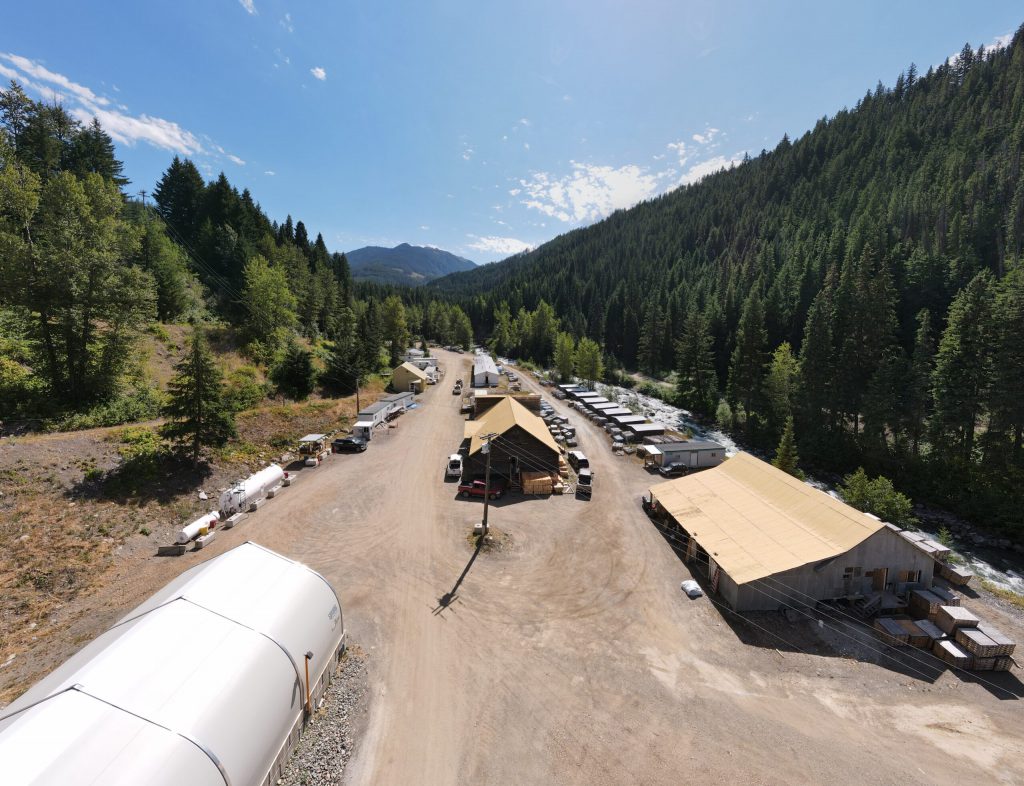Talisker drills 41.93 g/t gold over 1.25 metres at Bralorne project, British Columbia

Talisker Resources Ltd. [TSK-TSX; TSKFF-OTCQB] reported high-grade results within the historic ownership gap between the 100%-owned Bralorne and Pioneer mines located 160 km north of Vancouver, British Columbia..
Hole SB-2022-016 and SB-2022-012 are located within the Bralorne East Block and focuses on a historic ownership gap between the Bralorne and Pioneer Mines. SB-2022-016 intersected a total of six veins highlighted by 41.93 g/t gold over 1.25 metres within a broader zone of 9.68 g/t gold over 5.60 metres (202 Vein).
Also, 12.91 g/t gold over 1.50 metres (77 Vein); 11.93 g/t gold over 1.50 metres (New Vein); and 7.31 g/t gold over 1.75 metres (New Vein).
Hole SB-2022-012 intersected two veins highlighted by 22.92 g/t gold over 1.15 metres (New Vein) and 16.04 g/t gold over 1.05 metres (New Vein). True widths are estimated at 70 – 90% of intercept lengths and are based on oriented core measurements where available.
Talisker drilling to date at the Bralorne Gold Project has produced 397 vein intersections with a combined weighted average diluted grade of 9.50 g/t over an average intersection length of 1.73 metres.
Terry Harbort, President and CEO of Talisker, commented, “We are greatly encouraged by the development of new resource targets in the historic ownership gaps that exist between the old King, Bralorne and Pioneer mines. Delivering consistent high-grade and intercept thickness, these holes will add nicely to our upcoming resource estimate in this new, previously unexplored, and historically unmined area. We are waiting for our final 620 drill hole assay results from the laboratory so we can complete and release our eagerly awaited resource at Bralorne.”
A total of 140,671 metres (290 holes) has been drilled since Talisker initiated drilling at the Project in February 2020. Currently, there are 620 samples at the assay laboratory, which are expected to be received by the Company shortly.
Major vein structures intersected are considered classic Bralorne crack-seal quartz-carbonate veins with densely banded sulphide septae. Crack-seal septae host fine-grained arsenopyrite and pyrite mineralization. Alteration halos consist of strong silica-sericiteplus or minusmariposite alteration halos. All reported drill assay results are available on the company’s website.
Talisker’s projects include two advanced stage projects, the Bralorne Gold Complex and the Ladner Gold Project, both advanced stage projects with significant exploration potential from historical high-grade producing gold mines, as well as its Spences Bridge Project where the Company holds ~85% of the emerging Spences Bridge Gold Belt and several other early-stage Greenfields projects. With its properties comprising 304,931 hectares over 500 claims, three leases and 197 crown grant claims, Talisker is a dominant exploration player in south-central British Columbia.
